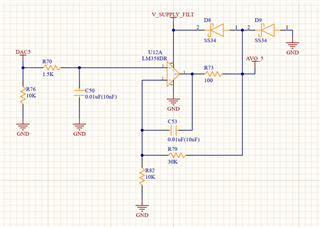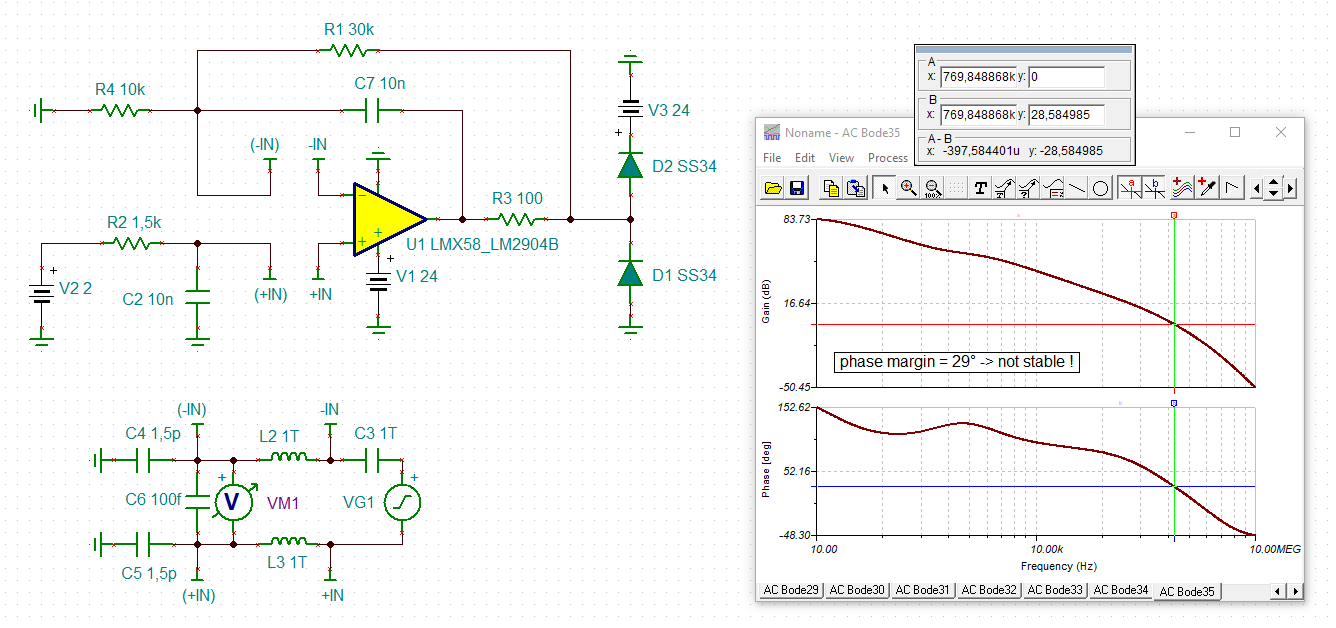Other Parts Discussed in Thread: , LM324B
Hey, by providing a DAC input, I'm using the LM358 as a voltage amplifier to produce a 0-10 V signal. The image is included below.
V_Supply_Filter is a 24V
I want to ask if I can remove the SS34 diode. How do I add reverse polarity protection to the output.






